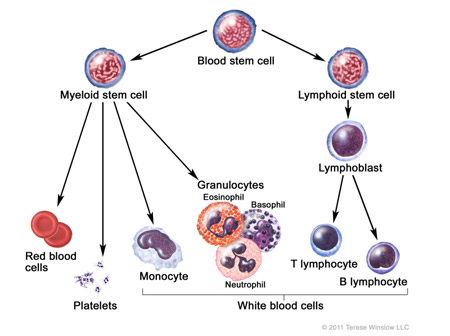About Non-Hodgkin Lymphoma (NHL)
 Lymphoma, or non-Hodgkin lymphoma (NHL), is a general term for cancers of the lymphatic system. The lymphatic system is part of the immune system that protects the body from infections. The lymphatic system contains a particular family of cells, called B and T lymphocytes. These cells are present in lymph glands, the spleen, the tonsils, adenoids and many other organs and tissues, including the intestinal tract. In non-Hodgkin lymphoma, these B and T lymphocyte cells have mutated and become malignant, or cancerous.
Lymphoma, or non-Hodgkin lymphoma (NHL), is a general term for cancers of the lymphatic system. The lymphatic system is part of the immune system that protects the body from infections. The lymphatic system contains a particular family of cells, called B and T lymphocytes. These cells are present in lymph glands, the spleen, the tonsils, adenoids and many other organs and tissues, including the intestinal tract. In non-Hodgkin lymphoma, these B and T lymphocyte cells have mutated and become malignant, or cancerous.
There are more than a dozen types of non-Hodgkin lymphoma, but the following are the most common types in children and adolescents:
- Burkitt’s lymphoma
- Diffuse large B-cell lymphoma
- Lymphoblastic lymphoma
- Anaplastic large cell lymphoma
Over 1,000 children and adolescents are diagnosed with non-Hodgkin lymphoma in the United States each year, and it makes up approximately 7% of all children’s cancers. It occurs more frequently with increasing age, and twice as many boys than girls are diagnosed.
Signs and Symptoms of Lymphoma
 The signs of lymphoma vary, but many children experience the following symptoms before they are diagnosed:
The signs of lymphoma vary, but many children experience the following symptoms before they are diagnosed:
- Enlarged lymph nodes, which may cause swelling in the neck, underarm or groin. Sometimes the lymph nodes involved are in the stomach or intestines so there may be swelling of the abdomen, abdominal pain or constipation.
- Difficulty breathing, such as wheezing or shortness of breath, or high-pitched breathing sounds may occur due to enlarged or swollen lymph glands in the chest
- Pain
- Unexplained fever
- Weight loss
- Night sweats



